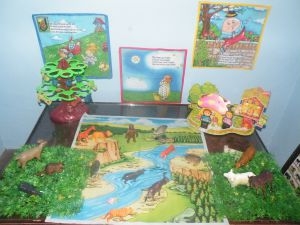Anxiety and fear are natural parts of growing up. They often indicate that children are learning to navigate and solve problems. The following article provides Effective Strategies To Support Children In Managing Their Anxiety, Creating A Safe Space, Identifying and Managing Triggers, Modeling Healthy Ways Of Handling Anxiety, Supporting Children In Understanding and Overcoming Fears and Anxities.
Effective Strategies To Support Children In Managing Their Anxiety
Anxiety can indeed be challenging for children, but there are several effective strategies to help them manage their fears. Here are a few tips:
-
Panic attacks can be incredibly overwhelming, especially for children. Here are some steps you can take to help your child during a panic attack:
-
Stay Calm: Your calm demeanor can help reassure your child.
-
Sit Down Together: Encourage them to sit down in a comfortable position.
-
Reassure Them: Let them know that they are safe and that the feelings will pass.
-
Use a Calm Voice: Speak slowly and gently to help soothe them.
-
Guide Their Breathing: Encourage slow, deep breaths to help reduce the panic.
-
Acknowledge Their Feelings: Validate their experience by acknowledging that what they are feeling is scary but temporary.
-
-
Hugs and other forms of consensual touch can be incredibly comforting and effective in reducing anxiety. The release of oxytocin, often referred to as the "love hormone," helps to lower cortisol levels, which are associated with stress. This physical connection can provide a sense of security and calm for children, helping them to feel more grounded and less anxious.
Incorporating regular, affectionate touch into your child's routine can be a simple yet powerful way to support their emotional well-being. Whether it's a hug, holding hands, or snuggling, these moments of connection can make a big difference.
-
Routines can be incredibly beneficial for children, especially those who are highly anxious. Establishing a consistent schedule helps them feel secure and reduces overall household stress. Here are some tips to create effective routines:
-
Set a Regular Bedtime and Wake-Up Time: Consistent sleep patterns are crucial for reducing anxiety.
-
Create a Morning Routine: Start the day with predictable activities like breakfast, brushing teeth, and getting dressed.
-
Plan After-School Activities: Include time for homework, play, and relaxation.
-
Incorporate Family Time: Regular family meals or activities can provide a sense of stability.
-
Prepare for the Next Day: Lay out clothes and pack school bags the night before to reduce morning stress.
-
Discuss the Schedule: Talk to your child about the importance of routines and involve them in planning.
-
-
Physical activity is a fantastic way to help children manage anxiety. Engaging in exercise, whether it's playing at a park, running around with friends, or participating in sports, can significantly boost endorphin levels. These "feel-good" chemicals help reduce stress and promote a sense of well-being.
Research has shown that children who are active on a daily basis tend to be happier and less anxious compared to those who are inactive. Encouraging your child to stay active can be a powerful tool in their anxiety management toolkit.
-
Sleep is crucial for children's overall well-being and can significantly impact their anxiety levels. Ensuring children get about 9 to 12 hours of sleep each night can help them feel more restored and less anxious. Here are some tips to help establish a healthy sleep routine:
-
Set a Consistent Bedtime: Aim for the same bedtime every night to regulate their internal clock.
-
Create a Relaxing Bedtime Routine: Activities like reading a book or taking a warm bath can signal that it's time to wind down.
-
Limit Screen Time Before Bed: Encourage them to avoid screens at least an hour before bedtime to promote better sleep.
-
Ensure a Comfortable Sleep Environment: A quiet, dark, and cool room can help improve sleep quality.
-
Discuss the Importance of Sleep: Talk to your child about why getting enough rest is important for their health and well-being.
-
-
Deep breathing is indeed a powerful tool for managing anxiety. Teaching your child to breathe from the belly can help them calm down during anxious moments. Here's a simple way to practice belly breathing:
-
Sit Comfortably: Have your child sit in a chair and lean forward slightly, placing their elbows on their knees.
-
Breathe Naturally: Encourage them to breathe naturally and focus on their breath.
-
Feel the Belly Rise and Fall: Ask them to place a hand on their belly to feel it rise and fall with each breath.
-
Slow and Deep Breaths: Guide them to take slow, deep breaths, inhaling through the nose and exhaling through the mouth.
-
-
Nutrition plays a crucial role in managing anxiety. Consuming vitamin-rich foods regularly can significantly improve brain function and reduce stress. Foods like salmon, almonds, blueberries, and eggs are particularly beneficial for their brain-boosting and stress-reducing properties.
Incorporating these nutritious foods into your child's diet can help them cope with feelings of fear and dread, providing them with the essential building blocks for overall health and well-being.
-
Journaling is indeed a versatile and powerful tool for children. It helps them identify and process their feelings while also enhancing their writing and communication skills. Here are some ways to encourage journaling:
-
Drawing: For kids who love to draw, a sketchbook can be a great way to express their emotions visually.
-
Prompted Journals: Books with specific prompts can help children explore their feelings in a structured way.
-
Writing: A lined notebook allows kids who enjoy writing to freely express their thoughts and emotions.
-
- Meditation is indeed a powerful tool for managing anxiety, and it's great to hear that early studies are showing positive results for children as well. Regular meditation can help improve concentration, emotional regulation, and self-awareness, which are all beneficial for reducing anxiety.
-
Managing screen time and ensuring healthy digital habits are crucial in today's world. Here are some tips to help you set limits and create a balanced approach:
-
Set Clear Boundaries: Establish specific times for screen use, such as after homework or during weekends.
-
Use Parental Controls: Utilize built-in parental controls on devices to restrict access to inappropriate content.
-
Encourage Offline Activities: Promote activities that don't involve screens, like reading, playing outside, or doing crafts.
-
Model Healthy Habits: Show your child how to balance screen time with other activities by practicing it yourself.
-
Discuss Digital Safety: Talk to your child about the importance of staying safe online and what to do if they encounter something upsetting.
-
Create Tech-Free Zones: Designate certain areas of your home, like the dining room or bedrooms, as screen-free zones.
-
Monitor Usage: Keep an eye on what your child is doing online and who they are interacting with.
-
Creating A Safe Space
Creating a safe space for your child is a wonderful idea. A cozy, calming area filled with their favorite items can provide a sanctuary where they can retreat when feeling anxious. Here are some tips to set up this space:
-
Choose a Quiet Spot: Find a quiet corner of your home where your child can feel undisturbed.
-
Comfortable Seating: Include a comfy chair, bean bag, or cushions.
-
Favorite Items: Fill the space with their favorite toys, books, or blankets.
-
Calming Tools: Add items that help them relax, such as stress balls, fidget toys, or a small water fountain.
-
Soft Lighting: Use soft, warm lighting to create a soothing atmosphere.
-
Breathing Aids: Provide tools for deep breathing, like a pinwheel or a bubble blower.
These are just a few strategies that can make a significant difference.
Identifying and Managing Triggers
Understanding and identifying triggers can be a game-changer for managing anxiety. When children learn to recognize what sets off their anxiety, they can start to take control and develop strategies to cope. Here are a few steps to help your child identify and manage their triggers:
-
Keep a Journal: Encourage your child to write down their feelings and what happened before they felt anxious. This can help identify patterns.
-
Discuss Feelings: Have regular conversations about their emotions and what might be causing them.
-
Teach Mindfulness: Mindfulness exercises can help children become more aware of their thoughts and feelings in the moment.
-
Create a Trigger List: Once triggers are identified, make a list and discuss ways to handle each one.
-
Practice Coping Strategies: Teach your child different ways to cope with anxiety, such as deep breathing, visualization, or physical activity.
By empowering your child with these skills, you can help them feel more in control and reduce the impact of anxiety on their daily life.
Modeling Healthy Ways Of Handling Anxiety
Modeling healthy ways of handling anxiety can be incredibly powerful for children. When they see you managing your own anxiety calmly, it reinforces the idea that they can also cope with their feelings. Here are a few tips for modeling healthy anxiety management:
-
Acknowledge Your Feelings: Let your child know when you're feeling anxious and explain why.
-
Demonstrate Coping Strategies: Show them how you use techniques like deep breathing, mindfulness, or physical activity to manage your anxiety.
-
Stay Calm: Your calm demeanor can help reassure them that anxiety is manageable.
-
Talk About It: Discuss how you feel and what you're doing to cope, so they understand that it's okay to talk about their own feelings.
By openly discussing and demonstrating these strategies, you can help your child develop their own healthy coping mechanisms.
Supporting Children In Understanding and Overcoming Fears and Anxities
Anxiety and fear are natural parts of growing up. They often indicate that children are learning to navigate and solve problems. As parents and caregivers, there are several ways to support children in understanding and overcoming their fears and anxieties:
-
Open Communication: Encourage your child to talk about their fears and anxieties. Listen without judgment and validate their feelings.
-
Teach Coping Skills: Introduce techniques like deep breathing, mindfulness, and positive self-talk to help them manage their anxiety.
-
Create a Safe Environment: Ensure your child feels safe and secure at home. A consistent routine can also provide a sense of stability.
-
Model Healthy Behavior: Show your child how you handle your own fears and anxieties in a healthy way.
-
Gradual Exposure: Help your child face their fears gradually, starting with less intimidating situations and building up to more challenging ones.
-
Professional Support: If anxiety becomes overwhelming, consider seeking help from a mental health professional who specializes in working with children.
By providing support and teaching effective coping strategies, you can help your child develop the confidence and skills they need to manage their fears and anxieties.







 Open ended questions cannot be responded to with one word answers such as yes or no. These types of questions enables a child to provide
Open ended questions cannot be responded to with one word answers such as yes or no. These types of questions enables a child to provide During your child’s preschool years, an important milestone begins to emerge. This is the development of pre-writing skills. Pre-writing skills are used to encourage, develop
During your child’s preschool years, an important milestone begins to emerge. This is the development of pre-writing skills. Pre-writing skills are used to encourage, develop Open ended materials enables children to play freely. They are objects that have no rules to follow, use or function. Raw materials that can be
Open ended materials enables children to play freely. They are objects that have no rules to follow, use or function. Raw materials that can be An Acknowledgment of the Country is a way of showing respect for the Traditional Owners and can be given by both non-Indigenous people and Aboriginal
An Acknowledgment of the Country is a way of showing respect for the Traditional Owners and can be given by both non-Indigenous people and Aboriginal Language plays an important role in a child’s development. It enables a child to communicate effectively with their family, learn at school, socialize with friends,
Language plays an important role in a child’s development. It enables a child to communicate effectively with their family, learn at school, socialize with friends, Like adults, children have to deal with their own stress in life. Moving house, starting a new school, preparing for a new sibling - these are
Like adults, children have to deal with their own stress in life. Moving house, starting a new school, preparing for a new sibling - these are Playdough is such a versatile material. It provides numerous benefits to children as they manipulate it, it is safe and soothing and provides children with
Playdough is such a versatile material. It provides numerous benefits to children as they manipulate it, it is safe and soothing and provides children with Teaching children about sustainability enables them to appreciate and respect the natural environment. Early childhood services can provide meaningful hand on learning experiences in order
Teaching children about sustainability enables them to appreciate and respect the natural environment. Early childhood services can provide meaningful hand on learning experiences in order Recycling is an important concept that teaches children to care for the environment. It encourages children to be responsible and show a growing appreciating for
Recycling is an important concept that teaches children to care for the environment. It encourages children to be responsible and show a growing appreciating for When children apply paint to paper, glue things together, or pound a lump of clay, they experiment with colour, shape design and texture.
When children apply paint to paper, glue things together, or pound a lump of clay, they experiment with colour, shape design and texture.



